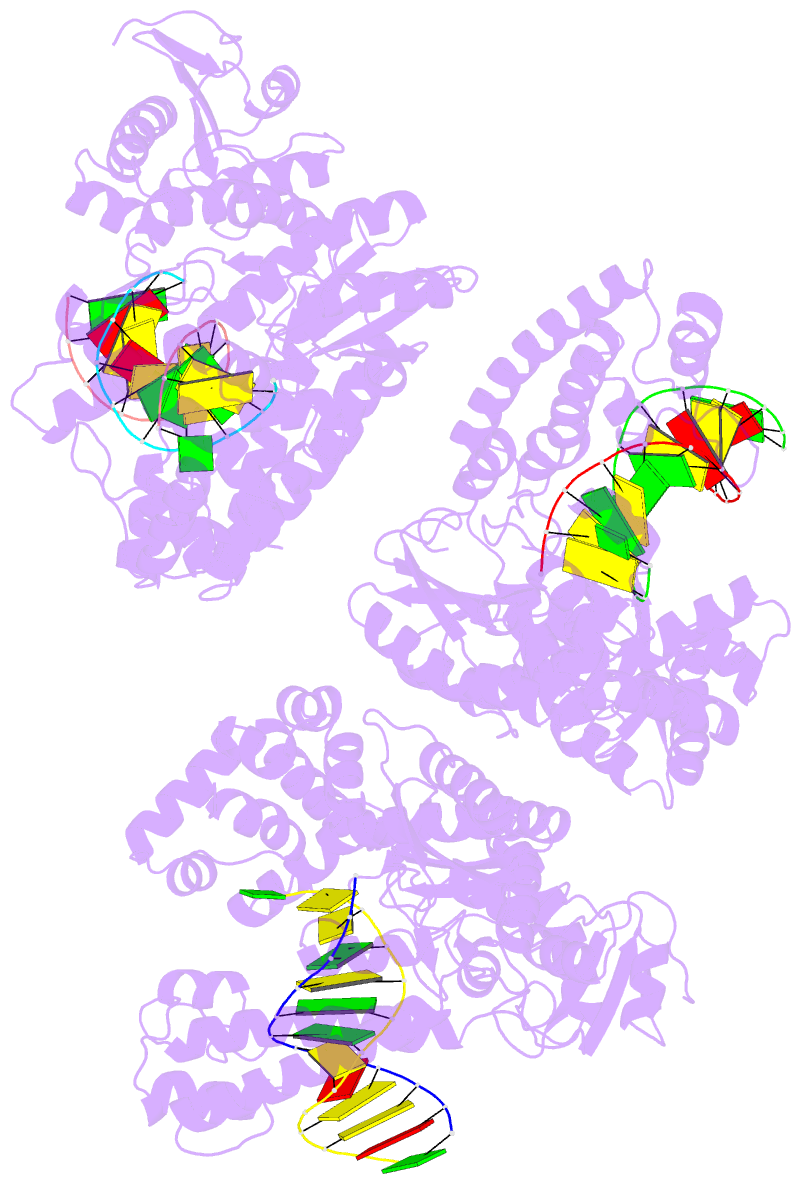Summary information and primary citation
- PDB-id
- 5w6q; DSSR-derived features in text and JSON formats
- Class
- DNA binding protein-DNA
- Method
- X-ray (2.66 Å)
- Summary
- Structural basis for recognition of artificial DNA by an evolved klentaq variant
- Reference
- Singh I, Laos R, Hoshika S, Benner SA, Georgiadis MM (2018): "Snapshots of an evolved DNA polymerase pre- and post-incorporation of an unnatural nucleotide." Nucleic Acids Res., 46, 7977-7988. doi: 10.1093/nar/gky552.
- Abstract
- The next challenge in synthetic biology is to be able to replicate synthetic nucleic acid sequences efficiently. The synthetic pair, 2-amino-8-(1-beta-d-2'- deoxyribofuranosyl) imidazo [1,2-a]-1,3,5-triazin-[8H]-4-one (trivially designated P) with 6-amino-3-(2'-deoxyribofuranosyl)-5-nitro-1H-pyridin-2-one (trivially designated Z), is replicated by certain Family A polymerases, albeit with lower efficiency. Through directed evolution, we identified a variant KlenTaq polymerase (M444V, P527A, D551E, E832V) that incorporates dZTP opposite P more efficiently than the wild-type enzyme. Here, we report two crystal structures of this variant KlenTaq, a post-incorporation complex that includes a template-primer with P:Z trapped in the active site (binary complex) and a pre-incorporation complex with dZTP paired to template P in the active site (ternary complex). In forming the ternary complex, the fingers domain exhibits a larger closure angle than in natural complexes but engages the template-primer and incoming dNTP through similar interactions. In the binary complex, although many of the interactions found in the natural complexes are retained, there is increased relative motion of the thumb domain. Collectively, our analyses suggest that it is the post-incorporation complex for unnatural substrates that presents a challenge to the natural enzyme and that more efficient replication of P:Z pairs requires a more flexible polymerase.





